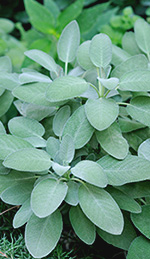 This close relative of wormwood has been a go-to in European and Chinese herbal medicine for centuries, especially as a women’s medicine for treating dysmenorrhea and painful childbirth. Though it is related to the absinthe wormwood (Artemisia absinthium), sweet annie (Artemisia annua) contains no thujone [5], which gives it a higher safety margin for therapeutic use. Thus, sweet annie essential oil is much more broadly used in aromatherapy compared to wormwood oil.
This close relative of wormwood has been a go-to in European and Chinese herbal medicine for centuries, especially as a women’s medicine for treating dysmenorrhea and painful childbirth. Though it is related to the absinthe wormwood (Artemisia absinthium), sweet annie (Artemisia annua) contains no thujone [5], which gives it a higher safety margin for therapeutic use. Thus, sweet annie essential oil is much more broadly used in aromatherapy compared to wormwood oil.
Native to Eurasia, the sweet annie plant is a perennial herbaceous shrub with feathery green leaves and small yellow flowers. The whole plant exudes a camphor-like odor, especially when the leaves are rubbed, and sweet annie essential oil has a strong dry-woody, licorice-like scent. The oil is yellow to brownish green and blends best with sweet orange, jasmine, lavender, and oakmoss.
Also called annual wormwood, in European herbalism sweet annie was used as a tea to bring down fevers and was believed to be the antidote to many poisons. People would strew the dried foliage on the floor in their homes as a moth repellent and in the belief that the sweet odors would repel the miasmas thought reponsible for the plague and other illnesses. Like absinthe wormwood, sweet annie leaves were sometimes used as a flavoring additive in beer before Bavarian purity laws restricted the allowable ingredients in beer to barley, hops, and water.
Traditional Chinese medicine classifies sweet annie as a heat-clearing herb with cooling and drying actions; the tea is used to treat conditions believed to be brought on by too much heat and wetness in the body’s humors, such as fever, jaundice, indigestion, and dysentery [1]. One traditional treatment that has found a place in modern medicine is sweet annie’s action against malaria: artemisinin, a compound extracted from sweet annie foliage, has been demonstrated to be highly effective at killing the malaria parasite, Plasmodium falciparum [2].
Always perform a patch test with sweet annie essential oil diluted in a carrier oil, as it can cause contact dermatitis in sensitive people. Pregnant or nursing women, or those with compromised immune systems or taking immunosuppressive drugs (for example, anti-rejection drugs) should not use sweet annie essential oil, as the oil can lower immune function [3]. In aromatherapy, sweet annie oil is used topically in small amounts to treat headaches, menstrual discomfort, fevers, and fungal skin infections such as athlete’s foot [4]. The oil also has suspected anti-viral effects, which is why some people inhale sweet annie oil from a diffuser to treat respiratory infections, as well as for congestion and nasal catarrh [3].
Like many essential oils, sweet annie oil can be blended with various essential oils that have similar effects to create a therapeutic synergy. Common blends combine sweet annie with other anti-inflammatory essential oils such as lavender and jasmine for the relief of headaches, menstrual discomfort and other conditions related to inflammation in the body. Though sweet annie tea is no longer a common medical treatment for malaria (having given way to more concentrated artemsinin extracts), the essential oil of sweet annie has recognized anti-infectious properties [3], especially when combined with anti-microbial powerhouses such as sweet orange, lemon, and other citrus oils!
REFERENCES
1. Dharmandanda, Subhuti. “CHING-HAO and the Artemisias Used in Chinese Medicine.” Institute for Traditional Medicine. Accessed April 11th, 2014. http://www.itmonline.org/arts/chinghao.htm.
2. Cumming, JN, P Ploypradith, and GH Posner. 1997. “Anti-malarial activity of artemisinin (qinghaosu) and related trioxanes: mechanism(s) of action.” Advances in Pharmacology 37: 253-97.
3. “Sweet Annie (Artemisia annua)” Healthline: Drugs A-Z.” Accessed April 11th, 2014. http://www.healthline.com/natstandardcontent/sweet-annie.
4. “Ask Granny Earth- Artemisia annua (Sweet Annie)”. Granny Earth, Naturopath. Accessed April 9th, 2014. http://grannyearth.com/ask-granny-earth/artemisia-annua-sweet-annie/.
5. Tisserand, Robert, and Rodney Young. 1995. Essential Oil Safety: A Guide for Health Care Professionals. Elseiver Health Sciences.

